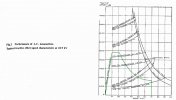Which diesel electric locomotives and multiple units in service at present have rheostatic braking?
Can anyone recommend any online or easily accessible source of information that gives the rheostatic braking force vs speed curves for any of these?
[The only UK loco I have so far seen one of these curves published for is the class 85 electric:

...come to think of it I would quite like to see what the curves look like for more modern electric traction too.]
Can anyone recommend any online or easily accessible source of information that gives the rheostatic braking force vs speed curves for any of these?
[The only UK loco I have so far seen one of these curves published for is the class 85 electric:

...come to think of it I would quite like to see what the curves look like for more modern electric traction too.]
